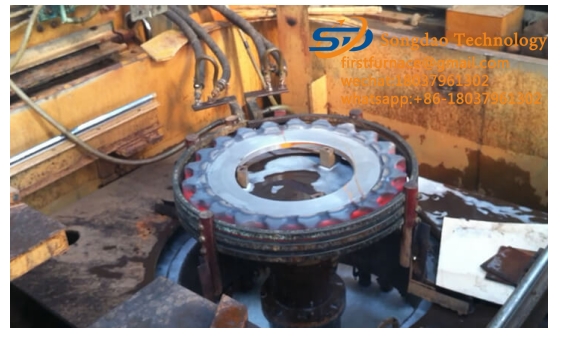- 12
- Dec
Common defects and countermeasures of induction hardening on the surface of induction heating equipment
Common defects and countermeasures of induction hardening on the surface of induction heating equipment
1. Material factors
The identification method we often use is the spark identification method. This is the simplest method. Check the sparks of the workpiece on the grinding wheel. You can roughly know whether the carbon content of the workpiece has changed. The higher the carbon content, the more sparks.
2. The quenching heating temperature is not enough or the pre-cooling time is long
Quenching heating temperature is not enough or pre-cooling time is too long, resulting in too low temperature during quenching. Take medium carbon steel as an example. The quenched structure of the former contains a large amount of undissolved ferrite, and the structure of the latter is troostite or sorbite.
3. अपर्याप्त शीतलन
विशेष रूप से स्कैनिंग शमन के दौरान, क्योंकि स्प्रे क्षेत्र बहुत छोटा है, वर्कपीस बुझने के बाद, स्प्रे क्षेत्र से गुजरने के बाद, कोर की गर्मी सतह को आत्म-तड़प कर देती है (स्टेप्ड शाफ्ट का बड़ा कदम सबसे अधिक संभावना है ऊपरी स्थिति होने पर उत्पन्न होता है), और सतह स्व-स्वभाव वाली होती है। तड़के का तापमान बहुत अधिक होता है, जिसे अक्सर सतह के रंग और तापमान से महसूस किया जा सकता है।
②In the one-time heating method, the cooling time is too short, the self-tempering temperature is too high, or the cross-sectional area of the spray hole is reduced by the scale of the spray hole, which causes the self-tempering temperature to be too high (gear quenching sensor with spray hole , The most prone to secondary maladies).
③The temperature of the quenching liquid is too high, the flow rate is reduced, the concentration changes, and the quenching liquid is mixed with oil stains.
④The spray hole is partially blocked, which is characterized by insufficient local hardness, and the soft block area often corresponds to the position of the spray hole blocked.

